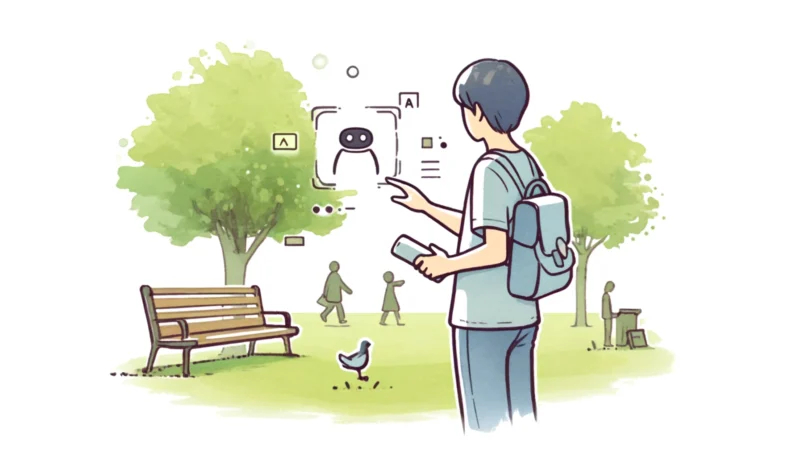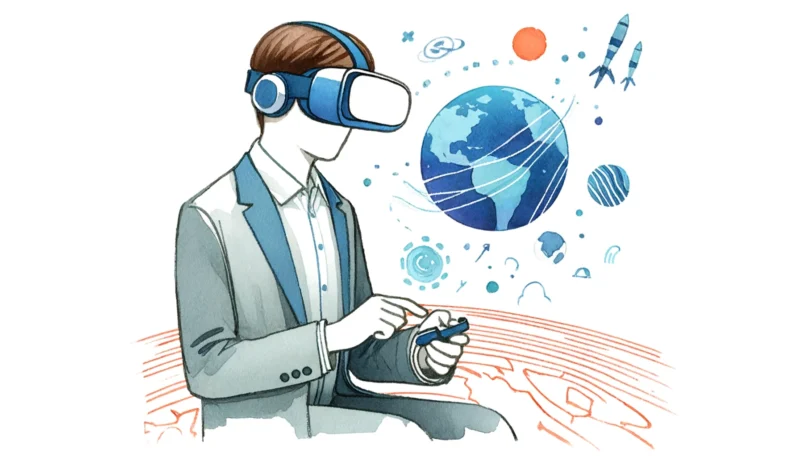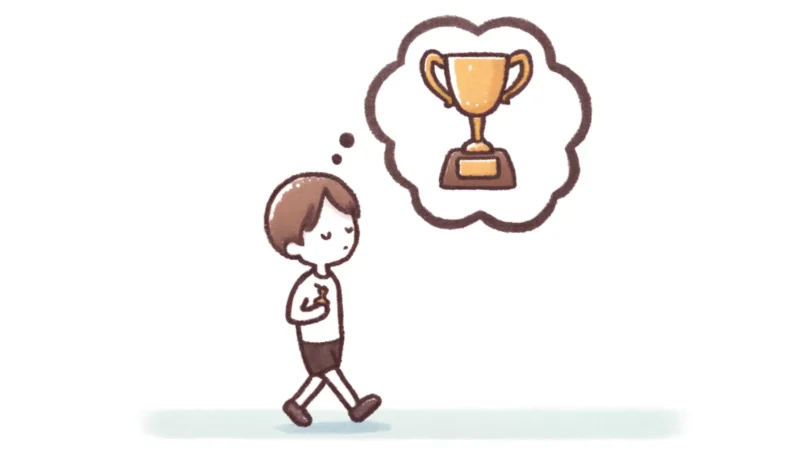In an era where the blending of virtual reality and augmented reality with our daily lives is no longer the stuff of science fiction, gamification emerges as a transformative approach to influence real-world behavior through game design principles. This innovative strategy harnesses the captivating essence of games—rewards, achievements, and interactive challenges—to motivate and engage individuals in non-game contexts. By embedding the mechanics of game-play into various aspects of life, gamification offers an intriguing solution to the challenge of capturing and maintaining attention in a distraction-filled world. The definition of gamification extends beyond mere entertainment, positioning itself as a powerful tool for enhancing engagement, learning outcomes, and behavioral change.
This article delves into the dynamics of gamification, unveiling the mechanisms that make it such an effective motivator. It explores the impact of gamification on real-world behavior, showcasing how rewards and achievements can drive actions and foster commitment. From the realm of education, where game-based learning has revolutionized the way knowledge is acquired, to the corporate world, where gamifying tasks has led to increased productivity and employee satisfaction, the applications of gamification are both vast and varied. Furthermore, it provides insights into designing effective gamification strategies, demonstrating how the judicious use of interactive elements can create engaging experiences that motivate individuals to achieve their goals. As we journey through the facets of gamification, from its definition to its application, the potential it holds for influencing behavior in the real world becomes increasingly evident.
Understanding Gamification
Definition and Concepts
Gamification is the application of game design elements and principles in non-game contexts to motivate and engage users. It uses a variety of game mechanics to create engaging and motivating experiences. This strategy motivates and influences people’s behavior, whether they are customers, clients, students, target audiences, or employees. The core idea is to make tasks that might otherwise be tedious, more enjoyable by applying game-like elements such as point systems and rewards.
Key Game Elements in Gamification
Key elements of gamification include Experience Points, Badges, Leaderboards, Levels, and Progress Bars. These elements help in creating a sense of achievement and competition. Experience Points are awarded for completing tasks or achieving goals, providing a sense of progress. Badges serve as a recognition of specific accomplishments, further motivating users to complete challenges. Leaderboards foster a healthy competitive environment by displaying user rankings, which can drive engagement and performance. Levels allow users to unlock new challenges and rewards, enhancing the sense of growth and achievement. Progress Bars visually represent a user’s progress towards a goal, motivating them to continue their efforts.
Purpose and Benefits of Gamification
The purpose of gamification is to increase engagement and participation, which can lead to improved learning outcomes, higher productivity, and more effective behavior change. It makes learning and training environments more interactive and enjoyable, which can significantly enhance information retention and motivation. Gamification strategies encourage exploration and give users a sense of control, which increases their enjoyment and commitment to the activity. Moreover, gamification can be a powerful tool for influencing behavior in various settings, including education, corporate training, and consumer marketing, by making activities more engaging and rewarding.

Mechanisms of Gamification
Points, Badges, and Leaderboards
Points, badges, and leaderboards, collectively known as PBL, are fundamental components in gamification that serve to motivate and engage users by providing tangible recognition of achievements and fostering a competitive environment. Badges symbolize accomplishments and motivate users by diversifying goals and highlighting achievements. Points act as a quantifiable measure of progress, encouraging continuous participation and rewarding proportional efforts. Leaderboards introduce a competitive element by enabling social comparison, which can significantly drive motivation and enhance user participation.
However, the effectiveness of these elements hinges on their thoughtful integration into the gamification system. Designing effective PBL systems requires a deep understanding of the user’s motivations and expectations. It is crucial to align these game mechanics with the overarching learning or business objectives and to ensure they support the core values of the system. Additionally, it is important to make these elements meaningful and relevant to the context, avoiding generic implementations that do not resonate with users.
Narrative and Storytelling
Narrative and storytelling are powerful mechanisms in gamification that enhance engagement by connecting emotionally with users and providing a context that enriches the experience. Effective storytelling can transform a gamified application from a simple task to an immersive adventure. It allows users to perceive themselves within the narrative, making choices that influence the outcome and deepen their connection to the experience.
Incorporating storytelling into gamification involves creating compelling narratives that drive user participation and foster a sense of exploration and discovery. This can be achieved by allowing users to create their own stories within the gamified system, which adds a layer of personalization and increases the emotional stakes of the interaction.
Avatars and Personalization
Avatars represent a user’s persona within a gamified environment and are a critical aspect of personalization. They allow users to customize their experiences and express their identity through the game. Studies have shown that avatar customization can significantly impact user identification with the game, enhancing their engagement and overall experience. The ability to modify an avatar’s appearance or attributes allows users to immerse themselves more deeply in the game and feel a greater sense of connection to the virtual world.
Customization options can vary from simple cosmetic changes to complex adjustments affecting the avatar’s abilities or role within the game. This level of personalization not only increases user satisfaction but also enhances the effectiveness of the gamification mechanism by making the experience more relevant and engaging for the user.
In conclusion, understanding and implementing the mechanisms of gamification such as PBL, narrative and storytelling, and avatars and personalization are essential for creating engaging and effective gamified systems. Each component needs to be carefully integrated and aligned with the goals of the gamified application to ensure it delivers a rewarding and motivating experience for users.

Impact of Gamification on Real-World Behavior
Motivational Drivers
Gamification leverages human psychology to motivate real-world behaviors by integrating core drives of both intrinsic and extrinsic nature. The Octalysis Framework illustrates this by identifying Right Brain Core Drives, which are inherently enjoyable and include elements like social influence and unpredictability, and Left Brain Core Drives, which are goal-oriented, such as the desire for accomplishment and ownership. These motivators are crucial in making tasks engaging and ensuring sustained interaction with gamified systems.
Case Studies and Examples
Numerous case studies highlight the tangible impact of gamification on various sectors. For instance, a major hotel chain saw a 712% uplift in sales by employing gamification strategies that enhanced product attractiveness and market performance. Similarly, a loyalty program designed for a major airline resulted in a 175% performance enhancement due to an effectively crafted reward system. In the educational sector, gamification has led to significant improvements in engagement and learning outcomes. For example, the use of gamified elements in an online banking tutorial attracted over 100,000 players globally, demonstrating the power of gamification to educate and engage simultaneously.
Challenges and Criticisms
Despite its successes, gamification is not without its challenges and criticisms. One major concern is the potential for gamification to shift focus from learning and intrinsic enjoyment to extrinsic rewards, such as points and badges. This can lead to a reduction in long-term engagement and knowledge retention. Furthermore, the effectiveness of gamification can vary widely based on its design and implementation. Poorly designed gamified systems might not align well with user motivations or could introduce elements that feel more like compulsory tasks rather than enjoyable activities, thus reducing their effectiveness.
Gamification also faces skepticism from educational and professional sectors where traditional methods are deeply ingrained. Overcoming this skepticism often requires demonstrating the clear benefits and outcomes of gamified approaches through well-documented case studies and robust data. Moreover, the design of gamification systems must be adaptable and flexible to cater to diverse user groups and changing objectives, which poses additional complexity in their development.
In conclusion, while gamification has shown considerable promise in motivating real-world behavior and enhancing engagement across various domains, it requires careful consideration of psychological drivers, thoughtful design, and ongoing evaluation to overcome challenges and maximize its effectiveness.

Applications of Gamification
Marketing and Customer Engagement
Gamification marketing transforms everyday brand interactions into engaging games by incorporating elements like points, badges, and challenges, significantly boosting customer engagement and conversion rates. This strategy not only makes interactions with brands more enjoyable but also enhances customer loyalty through reward programs, effectively increasing sales and repeat interactions. Interactive quizzes and surprise discounts further captivate the audience, adding a layer of excitement to the customer experience.
Education and Learning
In the educational sector, gamification introduces game design features and mechanics to create more engaging learning environments. By integrating rewards, competition, achievements, and progress tracking, educational gamification boosts student motivation and focus, enhancing both engagement and learning outcomes. This approach also supports personalized learning experiences, catering to individual student needs and promoting critical thinking and problem-solving skills.
Health and Fitness
Gamification in health and fitness motivates individuals to adopt healthier lifestyles by making health-oriented activities more engaging and enjoyable. Fitness apps and weight loss programs utilize gamification to encourage physical activity and healthy habits, with users often competing with friends and tracking progress toward shared goals. This not only enhances physical health but also supports mental well-being through apps that promote mindfulness and stress reduction.
Workplace Productivity
Workplace gamification leverages game design and psychology to increase productivity and employee engagement. By gamifying fitness, companies like Fitbit encourage physical activity among employees, which in turn can lead to improved health and reduced absenteeism. Moreover, gamification strategies in the workplace enhance skills development, motivate employees, and align their activities with business outcomes, leading to increased efficiency and better performance.
Each of these applications demonstrates the versatility and effectiveness of gamification across various domains, highlighting its role as a powerful tool for enhancing engagement, motivation, and productivity.

Designing Effective Gamification Strategies
Understanding User Psychology
In the realm of gamification, understanding user psychology is pivotal for crafting engaging experiences that drive specific behaviors. Game designers have honed their skills over decades, leveraging a deep understanding of player psychology to create compelling and addictive games. This rich knowledge base informs strategies that appeal to both intrinsic and extrinsic motivations, ensuring users find enjoyment and satisfaction in the tasks they perform.
Balancing Extrinsic and Intrinsic Rewards
Effective gamification strategies require a delicate balance between intrinsic and extrinsic rewards. Intrinsic rewards, such as the joy of mastering a game or the satisfaction derived from overcoming a challenge, are critical for long-term engagement and enjoyment. Extrinsic rewards, like points and badges, provide tangible milestones of achievement and motivate behaviors that might not naturally be engaging. However, designers must be careful not to over-rely on extrinsic rewards as they can diminish the perceived value of the activity itself. The challenge lies in designing rewards systems that enhance motivation without undermining intrinsic enjoyment.
Best Practices and Tips
To design effective gamification strategies, it is essential to start by understanding the target audience and the context in which the gamification will be applied. This involves considering factors such as age, job profile, technological proficiency, and cultural background. Additionally, the choice of content and how it is gamified plays a significant role in the success of the strategy. It is crucial to allow users some control over their experience, such as choosing avatars or setting personal challenges, to increase engagement and personal investment in the outcomes.
Furthermore, providing continuous feedback through badges, trophies, or progress bars helps maintain user interest and motivation. However, it is important to strike the right balance in rewarding users to avoid trivializing the rewards themselves. Finally, keeping the gamification experience fresh and challenging is key. Introducing new elements or increasing difficulty levels can help sustain user interest over time.
By adhering to these best practices and continuously evaluating the effectiveness of the gamification strategy, designers can create engaging and motivating experiences that meet both business objectives and user needs.
Conclusion
Through the lens of the explored dynamics, it is evident that gamification represents a significant shift in how engagement and motivation are cultivated across numerous sectors—from education and marketing to health and workplace productivity. By innovatively integrating game design elements like points, badges, and leaderboards, alongside the profound impact of narrative storytelling and avatar personalization, gamification strategies promise to elevate user experiences. These elements, when thoughtfully aligned with user psychology and intrinsic motivations, not only render tasks more enjoyable but also enhance the likelihood of achieving desired behaviors and outcomes, reinforcing the versatility and effectiveness of gamification as a tool.
As we reflect on the implications of gamification, it’s clear that its success hinges on a deep understanding of the psychological underpinnings that drive human engagement. Emphasizing the balance between extrinsic and intrinsic rewards highlights a critical consideration for the design of effective gamification strategies, ensuring they resonate well with the intended audience and foster sustained interaction. Given the tangible impact of gamification noted in various case studies, its potential in motivating real-world behavior is undeniable. Thus, while challenges remain, the path forward involves continuous exploration, adaptation, and evaluation of gamification elements to harness its full power for engaging and transforming real-world behaviors.

FAQs
- How does gamification enhance user engagement?
Gamification employs game-like elements in digital experiences to increase user activity and engagement, thereby fostering loyalty. By analyzing user data from customers, fans, and employees, gamification translates this information into behaviors that align with and support business objectives. - What role does gamification play in user experience design?
In User Experience (UX) Design, gamification is utilized as a tool to increase user engagement. The aim is not to convert entire user interfaces into games, but rather to incorporate enjoyable elements into applications and systems that might otherwise seem dull or irrelevant, enhancing the overall user experience. - What motivates players in game design?
Motivation in game design is achieved by giving players the freedom to make meaningful decisions that affect their gameplay. Game designers can boost player motivation by providing options such as branching storylines, expansive open-world settings, and opportunities for character customization. - How do behavioral games contribute to motivation?
Behavioral games motivate by using rewards and recognition to reinforce desired behaviors, helping individuals to form new habits and skills. Additionally, gamification leverages the innate human desires for social interaction and competition to further enhance motivation.










